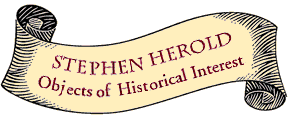

From
the Earliest Persian setlements in Bactria and Sogdiana, in the Northeast of
Afghanistan. In the constant movement of peoples out of the great Eurasian Steppes,
the Bactrian and Sogdianian tribes of the Persian peoples moved in c. 1500 B.C.
to replace the Indo-Aryans who had just migrated to India, filling the void
created by the collapse of the Indus civilization. The Medes and Persians were
just entering Northwest Persia at this date, although they are not noticed in
the records until some 500 years later. Bactrian and Sogdianian were a distinct
sub-family of Medio-Persian, showing some centuries of separation during their
migration down the east side of the deserts to the valleys of the Hindu Kush.
The Persians were skilled metal workers, as were most of the Indo-European
peoples. In seemingly primitive conditions, and without cities and a developed
economic system, they made all manner of fine and useful objects. The same holds
true today. In this distant region of the world metal was scarce and so tools
were only made as large as needed. This ax is some 3.5" long, but still
is an effective weapon when on a sturdy shaft. It is soft enough that it might
be arsenical copper bronze instead of tin bronze, although some tin was mined
in the Hindu Kush. It was found at a site in Badakshan, near the ancient city
of Balkh on the caravan route to the lapis lazuli mines and China. On such trade
routes we would expect a richer material culture, including artifacts such as
this ax. Then, as ever, trade generated wealth.
A very old
and rare piece with a fine patina. It was acquired from a Turkoman antique dealer
in Los Angeles who obtained it from "contacts" inside Afghanistan. As many fakes
are now coming from Afghanistan and Pakistan the dealer had it examined by Abdul
Wais, the retired director of the Kabul Museum (now living in Germany). This
piece and two other axes were found to be genuine, but several other pieces
were detected as modern forgeries. (Email documentation supplied.)
Overall very fine with a rich, green patina.
$350.00
Prints
Also see the fine prints of Egyptian Antiquities from Napoleon’s 1799 Expedition that discovered the Rosetta Stone and began Egyptology.
For orders, questions or suggestions please contact Stephen Herold.